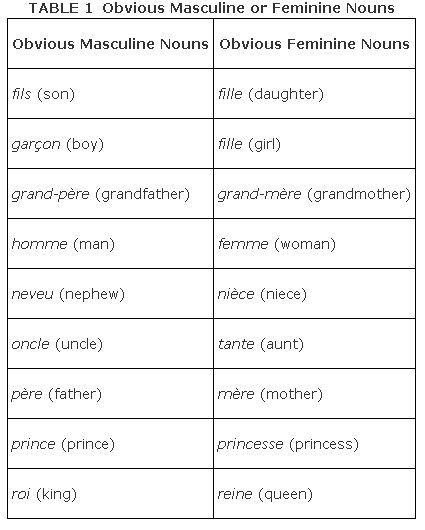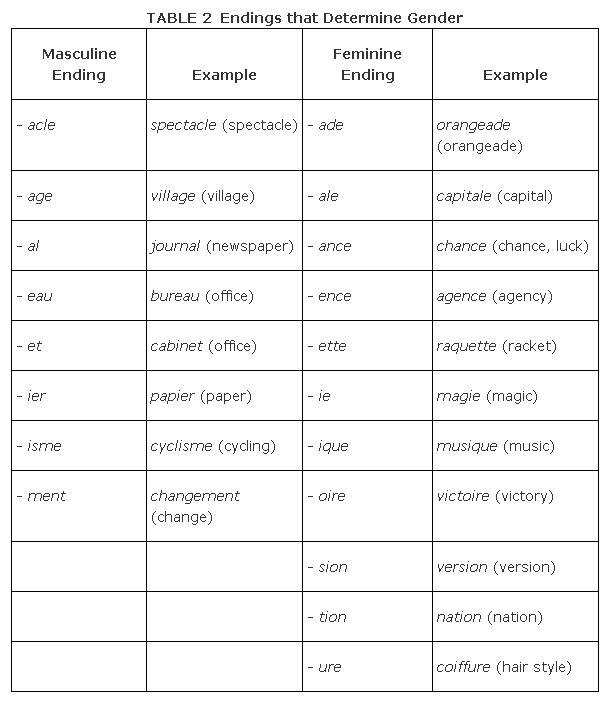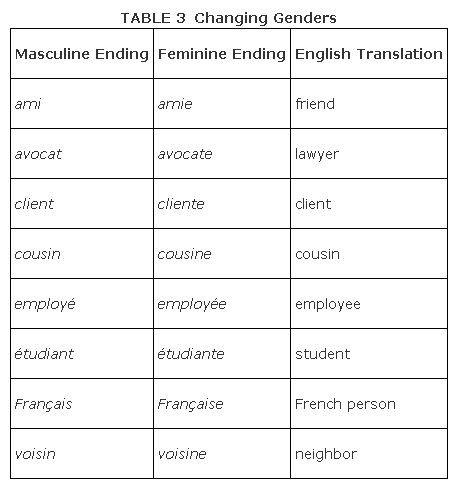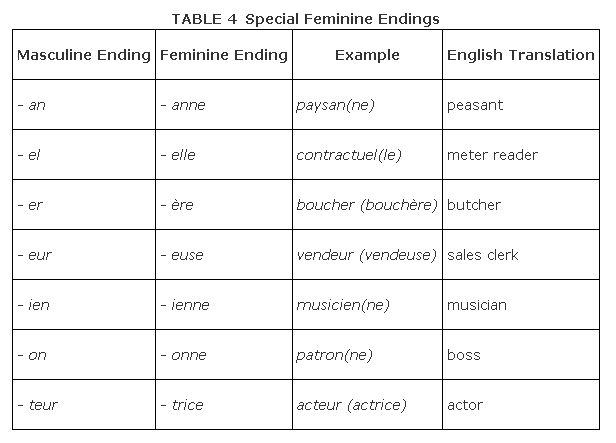A noun is a word used to name a person, place, thing, idea, or quality. In a bilingual dictionary, nouns may be designated by an n. (noun) or an s. (substantive, a word that stands for noun). Bilingual dictionaries also use m. for masculine and f. for feminine. If you see m./f., the noun may be either gender depending upon the person or thing to which you are referring.
Like English, all French nouns have a number: singular (one), as in la famille (the family), or plural (more than one), as in les enfants (the children). Unlike English, however, all French nouns also have a gender: masculine or feminine. In some instances, the gender of the noun is apparent: un garçon (a boy) is masculine, whereas une fille (a girl) is feminine. In other cases, the gender of a noun is not at all obvious and defies all rules of common sense or logic: une chemise (a man‐tailored shirt) is feminine, while un jupon (a slip) is masculine.
No explanations exist as to why French nouns have a gender or how the gender of any noun was originally determined, so you cannot rely on a rule to guide you; however, certain endings do generally indicate a feminine or masculine noun. For the most part, though, the gender of nouns must be memorized — through repetition, you can likely commit them to memory.
Obvious masculine and feminine nouns
Nouns that refer to males are always masculine and their female counterparts are always feminine, as shown in Table 1.

Nouns that give you a hint
In some cases, the gender of a noun can be determined by its ending, as shown in Table 2. Exceptions are the feminine words page (page of a book) and plage ( beach) that end in ‐ age and the feminine words eau (water) and peau (skin) that end in ‐ eau.

Nouns that change gender
Consider the following nouns that can be either masculine or feminine, depending upon whom you are referring. Make sure to use the proper article ( le, l', un for masculine) or ( la, l', une for feminine) before the noun.
- artiste (artist)
- camarade (friend)
- collègue (colleague)
- concierge (superintendent)
- élève (student)
- enfant (child)
- malade (patient)
- secrétaire (secretary)
- touriste (tourist)
Some nouns can be easily changed from one gender to another by adding an e to the masculine form to get the feminine form, as shown in Table 3. Keep in mind that adding an e to a final vowel does not change the sound of the word. Adding an e to a final consonant, however, necessitates pronouncing that final consonant sound.

Some masculine noun endings (usually referring to professions) have a corresponding feminine ending, as indicated in Table 4, that is used when the professional is female. The masculine ‐ an, ‐ien, and ‐ on endings are nasalized when pronounced, whereas the feminine counterparts are not.

Some nouns have differenct meanings depending upon whether they are used in a masculine or feminine sense. Consult Table 5 to use these words correctly.

Nouns with gender that must be memorized
Some high‐frequency words are always masculine or feminine, despite the gender of the person referred to. Don't be tempted to select the article you use based on the gender of the person about whom you are speaking:
- un agent de police (a police officer)
- un bébé (a baby)
- un chef (a chef, a leader, a head)
- un dentiste (a dentist)
- un docteur (a doctor)
- un écrivain (a writer)
- un ingénieur (an engineer)
- un libraire (a bookstore clerk)
- un mannequin (a model)
- un médecin (a doctor)
- un peintre (a painter)
- un pompier (a fire fighter)
- un professeur (a teacher)
- une connaissance (an acquaintance)
- une personne (a person)
- une star (a star)
- une vedette (a star)
- une victime (a victim)